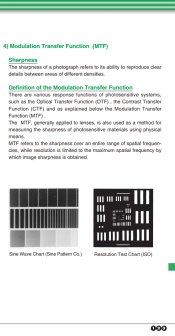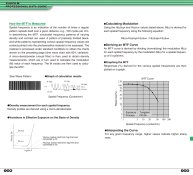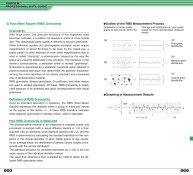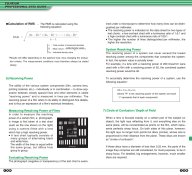The extinction resolution depends on the level of input contrast. The film MTF is only a description on how much of the input contrast is film recorded by the film. If we pick up your TMY MTF for a theoretical exercise and you start with 1000:1 contrast and the film has an MTF of 0.11% (extrapolated guess as Kodak does not provide data for this spatial frequency in the graph) at 200 lp/mm then the recorded contrast will be 1.1:1 and thus barely resolved detail. If your input contrast ratio is only 1.6:1 and the film MTF is 70% at 50 lp/mm then the recorded contrast on film will be also just about 1.1:1.
In practical photography it does not always work exactly like this as there are other factors to consider. The variably sized crystals reacting differently to light could be a factor. The MTF is only an approximation. Near a film’s resolution limit fine detail is rendered out of randomly distributed variable sized grain clumps and way too fuzzy to be accurately described by an MTF.
Exactly.
But also consider that this 1000:1 or 1.6:1 is TOC, so it's the actual projected (or contacted) contrast on film, not the contrast of the physical target before projecting it. A real shot has the lens contrast transfer (at high lp/mm) limiting edge contrast and also flare decreases comtrast.
Also note that TOC 1.6:1 50lp/mm and TOC 1000:200lp/mm are at extintion, so conditions near 0% MTF response are reached.
this is totally well described in the ISO 6328 norm, that fuji document tells quite incomplete information in the critical points, but ISO 6328 is clear. I saw ISO 6328 doc several years ago, IIRC a limiting target element (extintion) was used to issue a rating.
For this reason the (TMY) MTF graph made at TOC 1000:0 has to hit coordinates [0%MTF , 200lp/mm] and the MTF graph made at TOC 1.6:1 has to hit coordinates [0%MTF , 50lp/mm] like the guessed lines I painted hit. Of course those lines are a theoric exercise, but they show perfectly the real nature of the situation.
Both kodak and fuji don't say the contrast in what their datasheet MTF is made, this is not nice. Actually there is no doubt because a curve tending to hit 200lp/mm at 0% MTF can only be the TOC 1000:1 one, but they should state it.
The MTF is only an approximation.
I agree... while the MTF chart itself is not an aproximation (it has to be the accurate measurement of the modulation transfer in the tested conditions) of course it does not say how much pictorially degradated the image is at high cycles for the contrast, as beyond the contrast loss we have to add grain noise to the degradation. Well, another way to say the same.
--------
Anyway we should be aware that the MTF charts in Fuji/Kodak datasheets are missleading, because they report a situation (on film TOC 1000:1) that is exeptional in real scenes, as a black line on a perfect white delivers 8:1 and contast fall in the projected edge is high cycles are considered.
--------
IMO, all that has to be well understood if wanting to undesrtand well what is required from scanners and in what situations. For example the Epson V700 (if well focused !) resolves 55lp/mm (48 in the Vert axis) at extintion, matching the extintion on film in many of the pictorial situations, for this reason the practical tests made by Alan and Pali show those matching results compared to high end machines, of course there are situations like the Serger's Porsche that are quite more challenging.










